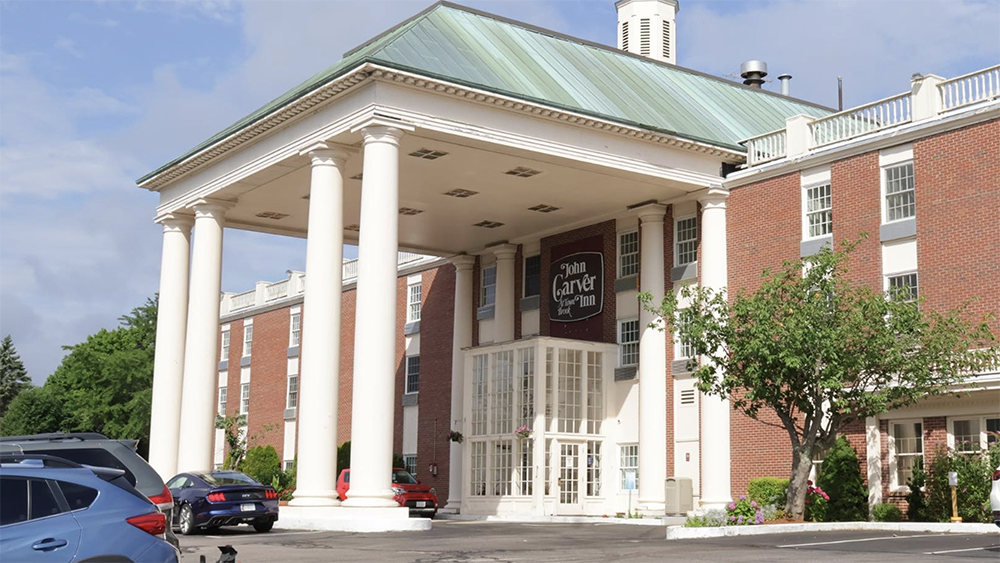Communities flying the American flag for 4th of July celebrations
As we prepare to observe Independence Day – a day commemorating the Declaration of Independence, which was ratified by the Second Continental Congress on July 4, 1776 – many HOA and condo residents across the country will display the American flag.
CAI believes all Americans should have the opportunity to display the U.S. flag.
In July 2006, the U.S. Congress passed the Freedom to Display the American Flag Act.
The law states “a condominium association, cooperative association, or residential real estate management association may not adopt or enforce any policy, or enter into any agreement, that would restrict or prevent a member of the association from displaying the flag of the United States on residential property within the association with respect to which such member has a separate ownership interest or a right to exclusive possession or use.”
The law goes on to say:
“Nothing in this act shall be considered to permit any display or use that is inconsistent with:
Any provision of Chapter 1 of Title 4, United States Code, or any rule or custom pertaining to the proper display or use of the flag of the United States (as established pursuant to such chapter or any otherwise applicable provision of law); or
Any reasonable restriction pertaining to the time, place, or manner of displaying the flag of the United States necessary to protect a substantial interest of the condominium association, cooperative association, or residential real estate management association.”
Community associations may not prohibit the display of the American flag. Additionally, they aren’t responsible for enforcing guidelines for how to display the flag. We hope your residents enjoy a sense of community on this 4th of July as we collectively celebrate.
CAI’s Display of the American Flag Public Policy
In this instance, Community Associations Institute (CAI) strongly supports the elimination of community association restrictions that prohibit the display of a reasonably sized flagpole and a reasonably sized, removable American flag from a resident’s exclusive use or limited common element areas, so long as the flag is displayed in accordance with the Federal Flag Code, 4 U.S.C Sections 5-10, as amended. CAI further believes that community associations – not a state law – are best suited to determine the appropriate size, placement, and installation of a flagpole.
CAI strongly believes that all Americans should have the opportunity to display the U.S. flag to demonstrate their patriotism and support of our country. A community association board of directors should be reasonable and allow the public display of our nation’s most sacred emblem. To that end, CAI has supported numerous bills to overturn anti-flag rules, and, in the fall of 2001, initiated Operation Old Glory! That recommended all associations review their rules on flag display with respect to reasonableness.
While CAI applauds efforts by associations and state legislatures to promote the flying of the American flag, we do not feel it is sensible to eliminate all mechanisms for consideration and approval of the size, placement, or installation of a flagpole. Although flagpoles may be appropriate for some associations, they are clearly not appropriate for all community associations. An association, not state law, is the best entity for making a determination on height and placement parameters for a flagpole. Even though the height and placement of a flagpole may seem reasonable to one homeowner, the neighbors may not agree. The biggest issue that many homeowners face is the noise from the halyard hardware blowing against the poles. Accordingly, CAI believes the association’s architectural review process is the best avenue to take when determining if the installation and location of a flagpole may threaten the community’s health or safety. Local governmental ordinances may also refer to flagpole restrictions in residential areas.
A number of states have passed legislation that aligns with CAI policy by acknowledging that all residents must be allowed to fly a flag from their home and by permitting reasonable regulations regarding the installation and placement of a permanent flagpole. These states recognize that flagpoles, like any permanent fixture, should be reviewed by an association’s architectural review committee prior to construction.
Mount Vernon Co. acquires John Carver Inn & Spa in Plymouth, MA

Selecting the right façade installation firm - by Steven Powell

Recently passed legislation creates opportunities to meet CT’s changing energy needs - by Klein and Feinn


.png)





.png)

